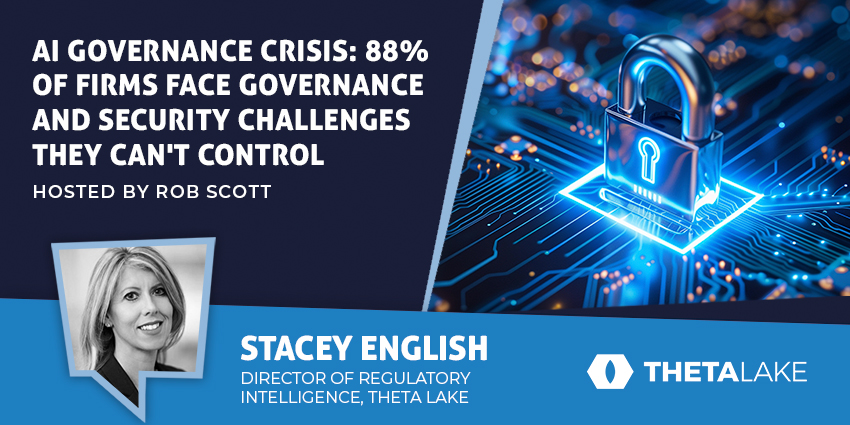These days, the cost of poor security is so much easier to underestimate than most companies realize, particularly in the hybrid workplace. We know that flexible work is here to stay, but what most business leaders don’t realize is how much they lose when they don’t align the right security strategy and tools with the new workplace reality.
The cost of poor cybersecurity in hybrid environments isn’t just a scary number on a breach report. It’s a mid-level engineer losing an afternoon to MFA lockouts. A compliance lead is rewriting policies around the mess left by an unsanctioned AI tool. A deal that dies on the vine because your Teams invite got phished, and the prospect lost faith.
Yes, the big-ticket numbers are alarming. IBM puts the average breach at $4.4 million globally. Healthcare breaches now average over $10 million. But that’s just the damage with a headline. The real cost adds up in more ways than you’d expect.
The Hidden Costs of Poor Cybersecurity in Hybrid Workplaces
Let’s start with the obvious: a breach is expensive. No surprises there. Fines are costly, too. In the UK, throughout 2024, the average fine for a GDPR penalty was about £153,722. But focusing only on fines and forensics is like looking at a house fire and only counting the water bill.
Here’s what hits your bottom line:
Compliance Fines & Breach Fallout
Let’s start with the costs you can actually track on a spreadsheet.
A single violation under GDPR can cost you €20 million or 4 percent of global turnover — whichever’s higher. In the US, HIPAA violations can hit healthcare firms for up to $1.5 million per breach. Finance firms? Add MiFID II, GLBA, and PCI-DSS to your headache list.
But the fine is the tip of the iceberg. Organizations pay millions in legal fees, incident response, and reputational mitigation after a major cyber incident. That’s before class-action lawsuits or regulatory sanctions are factored in.
Lost Productivity
Security disruptions are rarely “clean” downtime. They sprawl, delay approvals, stall onboarding, break logins, and jam up compliance. In hybrid environments, the fragmentation makes it worse.
The average company has around 21 days of downtime to deal with after a ransomware attack. That’s nearly a month of ghost time for high-salaried teams.
Even low-impact breaches can create hidden slowdowns: a remote finance team rebuilding their shared drives; a legal assistant using WhatsApp because email attachments are blocked. All of it adds up to a team that’s just surviving, not thriving.
Redundant Tools & Wasted Licenses
Shadow IT is a symptom of friction. If people are bypassing approved platforms for faster, smoother, or more intuitive ones, you’re not just risking security; you could be wasting money.
About 53 percent of the tools companies pay for aren’t utilized to their full potential, because employees have already found better options elsewhere. If your security team isn’t checking for shadow IT issues, then the chances are you’re not making the most of your budget.
You might even be wasting money on new tools that your employees are never going to use, when you could be investing in solutions that generate results.
Culture Damage and Attrition
In regulated industries, hybrid workers already deal with a lot of worries, about which tools they use, links they click, and data they share. If a breach happens or a security incident emerges, this throws everyone into chaos. Systems go into lockdown, apps get banned, and everyone’s on high alert.
It doesn’t take long for this tension to turn into a blame culture, where security becomes synonymous with barriers. Employees stop raising red flags because they’re worried about what might happen, and the risks continue to compound.
Sometimes, the stress even leads to attrition. 94% of employees in the UK are already frustrated by workplace tech. When security issues constantly get in the way of productivity and progress, they’re more likely to start looking for different, more relaxed employment opportunities.
Trust, Reputation & Business Continuity
Often, the cost of poor cybersecurity among hybrid teams extends into reputational damage. Breaches don’t cost you the benefit of the doubt.
Sometimes, a single breach, leaked record, or news report about a phishing incident is enough to drive loyal clients away for good. Reputation losses are often the longest-lasting and most underreported cost of cybersecurity failures.
Enterprise buyers need to factor this in. One botched incident response can cost you customers, partners, vendors, and talent. Rebuilding trust is slow, expensive, and never guaranteed.
The Cost of Poor Cybersecurity, and The ROI of Getting It Right
If the cost of poor cybersecurity feels abstract, look closer. The flip side of breach fallout is measurable value, and enterprise IT leaders are increasingly seeing hybrid security as an investment with both hard and soft returns.
From a hard ROI perspective, you benefit from:
- Faster recovery times when incidents do happen (and reduced downtime).
- Smoother workflows, fewer tech issues, and happier, more productive teams.
- Lower overheads for shadow IT, legal support, and reputation management.
On the softer side, eliminating security issues in hybrid work reduces attrition, bolsters your reputation, and takes the strain off already overworked IT staff.
Some examples?
- Healthcare: Medicus IT used a ZTNA strategy with the support of CheckPoint to improve hybrid work security, reduce risks, and minimize breaches. They didn’t just improve compliance; they also cut legacy licensing costs by 40 percent.
- Government/Public Sector: The Vermont Judiciary group combined a hybrid work strategy with SASE and access control services from Palo Alto Networks. They ended up with a 50-fold improvement in network capacity, 100 percent higher uptime, and cost savings of $350k annually.
- Finance: Nationwide Building Society combined Microsoft 365 solutions for communication and collaboration with UEM from Microsoft Intune. The technology stack cut risks, accelerated cloud migration, and reduced tech costs by 27 percent.
Every step you take to secure the hybrid workplace pays measurable dividends.
Mitigating the Cost of Poor Cybersecurity in Hybrid Work
Like it or not, hybrid work is unlikely to disappear any time soon, but the risks aren’t going away either. If businesses want to unlock the full potential of a flexible workforce, they need to understand that part of the ROI comes from the right security strategy.
The cost of poor cybersecurity goes far deeper than most audits capture. It shows up in clunky logins that frustrate top performers, slow recovery times that break SLAs and burn relationships, and long-term reputational damage.
Recognizing that makes it much easier to make a business case for the ZTNA strategies, unified endpoint management tools, and security systems that actually make hybrid work safer.







